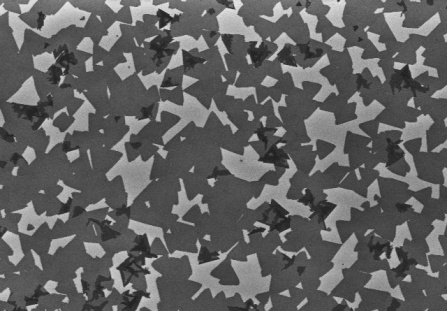
New research on 2D tungsten disulfide (WS2) could open the door to advances in quantum computing. Scientists at University of Buffalo report that they can manipulate the electronic properties of this super-thin material in ways that could be useful for encoding quantum data.
Two-dimensional tungsten disulfide is a single layer of the material that’s three atoms thick. In this configuration, WS2 has two energy valleys, both with the same energy. By applying a magnetic field of 1 Tesla, the team has been able to achieve an enormous shift in the energy of the valleys, which is equivalent to applying a magnetic field of about a hundred Tesla if the europium sulfide were not present.
In both WS2, electrons populating the two energy valleys have opposite spins, a form of angular momentum. While this trait is not necessary for creating a qubit, it may provide certain protection of the quantum states, making them more robust. (University at Buffalo)
